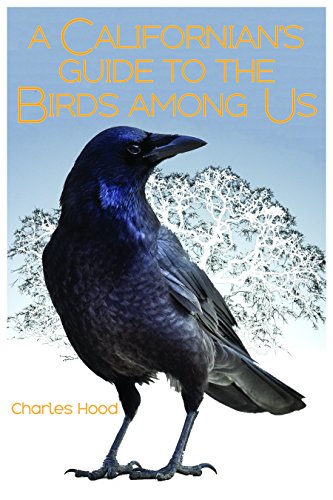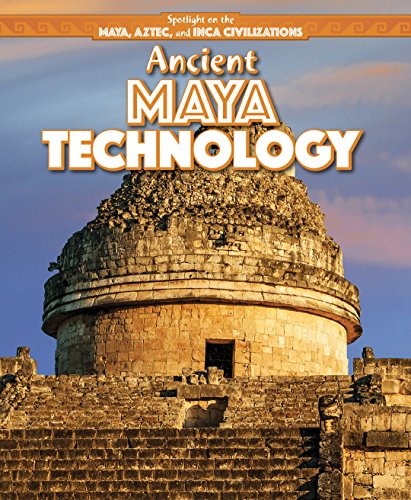-
A Californian's Guide to the Birds among Us
Charles Hood
Paperback (Heyday, Aug. 1, 2017)As its sister title, A Californian's Guide to the Trees among Us, did for arboreal varieties, this new guidebook introduces casual birders to 120 of California's most easily seen bird species—native and exotic alike—as found in a mix of urban, suburban, and traditionally natural habitats. Full-color images and clear, direct descriptions make identification easy, and author Charles Hood supplements the essential information with surprising facts and trivia, including endangered-species recovery stories and the world record for grasshoppers eaten by one flycatcher in a single day. In sections addressing which gear to buy, where to go birdwatching, and how to read a birdsong transcription, Hood encourages readers to take ownership of their experiences, no matter their level of ornithological expertise. This accurate, lively, and even quotable guide will inspire people to notice nature more closely and find joy in interacting with the astounding diversity of avian life in California.
-
Living lights : a popular account of phosphorescent animals and vegetables
Charles Holder
eBookLiving lights : a popular account of phosphorescent animals and vegetables. 280 Pages.
-
Meat Logic: Why Do We Eat Animals?
Charles Horn
eBookWhy do we eat animals?Most of us think this question is absurd, but if pressed to answer we tend to provide one of a number of rationalizations. For example:"Humans are omnivores."“Every living thing eats other living things.”"Animals don't possess human cognition."“Humans need to eat animals to live.”We’ve all heard these arguments before, and many others too. Maybe we’ve even used these arguments ourselves. But are they logically sound?Or is eating animals in fact a prejudice, involving a thought process similar to the thought process behind racism and sexism? How exactly could the subject of eating animals teach us anything about prejudice and human rights? And supposing humans actually did need to eat animals to stay healthy, what can logic tell us about how we should act in such a situation?In this book we examine 31 categories of rationalizations for eating animals and put them all to the test. Do our thoughts and actions stand up to rational scrutiny or not? And if our thought process is ever failing us, can this be illuminated?Along with presenting a review of some of the important philosophical literature on the subject, Meat Logic examines the logic of eating animals to answer the age-old question once and for all.You may never think of food the same way again.
-
Earth's Biosphere
Charles Hofer
Paperback (PowerKids Press, Aug. 15, 2018)The biosphere refers to the parts of Earth where life exists or where known life has existed in the past. The biosphere is comprised of the atmosphere, geosphere, and hydrosphere because life exists in each of those three spheres, from birds in the sky to fish in the water to worms in the dirt. Food chains represent interconnected life cycles in the biosphere. Energy is transferred from one organism to the next and, as apex predators die, nutrients are returned to the soil. Readers will learn how people affect the biosphere and how life and energy are maintained in the biosphere. R
R
-
A Californian’s Guide to the Birds among Us
Charles Hood
eBook (Heyday, Aug. 1, 2017)As its sister title, A Californian’s Guide to the Trees among Us, did for arboreal varieties, this new guidebook introduces casual birders to 120 of California’s most easily seen bird species—native and exotic alike—as found in a mix of urban, suburban, and traditionally natural habitats. Full-color images and clear, direct descriptions make identification easy, and author Charles Hood supplements the essential information with surprising facts and trivia, including endangered-species recovery stories and the world record for grasshoppers eaten by one flycatcher in a single day. In sections addressing which gear to buy, where to go birdwatching, and how to read a birdsong transcription, Hood encourages readers to take ownership of their experiences, no matter their level of ornithological expertise. This accurate, lively, and even quotable guide will inspire people to notice nature more closely and find joy in interacting with the astounding diversity of avian life in California.
-
Snakebite!: Antivenom and a Global Health Crisis
Charles C. Hofer
Library Binding (Twenty-First Century Books TM, Aug. 1, 2018)Every year, more than half a million people worldwide either die or lose limbs from venomous snakebites. See how a global crisis has emerged due to inadequate supplies of antivenom. Examine the biology of venomous snakes, the pharmacology and biochemistry of antivenom, its use in treating disease, and the politics of bringing life-saving antivenom drugs to market. Meet the doctors, herpetologists, medical researchers, conservationists, and patients working together to address an international crisis. Z
Z
-
How Do Irrigation Systems Work?
Charles Hofer
Library Binding (PowerKids Press, Aug. 15, 2016)An irrigation system is an arrangement of canals and conduits that bring water to crops that need it. Even the earliest civilizations found ways to irrigate their crops with water from nearby rivers. In time, simple canals gave way to more advanced technology, leading to todays massive irrigation systems. In this book, readers will explore essential STEM topics while learning the fascinating history behind irrigation systems, including their different parts, how they are used, and the amazing engineers and scientists who make them possible. The text was designed to reflect social studies and science curricula. Photographs, diagrams, and fact boxes are sure to capture the attention of even reluctant readers. S
S
-
Bo Loney Goes to a New School
Charles Holmes
Paperback (CreateSpace Independent Publishing Platform, )None
-
Native Americans and European Settlers
Charles Hofer
Library Binding (PowerKids Press, July 15, 2019)The United States of America was born of cooperation and conflict. On one side were the Native Americans, represented by dozens of different tribes from coast to coast. On the other were the European settlers, who flocked to the New World seeking freedom or fortune. What began as a sometimes friendly and cooperative relationship soon led to bitter and bloody conflicts as the young and fragile nation sought its identity. This book explores the complex history and the turbulent relations between native people and the new settlers in North America. R
R
-
Meat Logic: Why Do We Eat Animals?
Charles Horn
Paperback (CreateSpace Independent Publishing Platform, June 9, 2014)Why do we eat animals? Most of us think this question is absurd, but if pressed to answer we tend to provide one of a number of rationalizations. For example: "Humans are omnivores." “Every living thing eats other living things.” "Animals don't possess human cognition." “Humans need to eat animals to live.” We’ve all heard these arguments before, and many others too. Maybe we’ve even used these arguments ourselves. But are they logically sound? Or is eating animals in fact a prejudice, involving a thought process similar to the thought process behind racism and sexism? How exactly could the subject of eating animals teach us anything about prejudice and human rights? And supposing humans actually did need to eat animals to stay healthy, what can logic tell us about how we should act in such a situation? In this book we examine 31 categories of rationalizations for eating animals and put them all to the test. Do our thoughts and actions stand up to rational scrutiny or not? And if our thought process is ever failing us, can this be illuminated? Along with presenting a review of some of the important philosophical literature on the subject, Meat Logic examines the logic of eating animals to answer the age-old question once and for all. You may never think of food the same way again.
-
Ancient Maya Technology
Charles Hofer
Paperback (PowerKids Press, Aug. 15, 2016)At their peak, the ancient Maya lived in one of the most advanced civilizations in the world. Their calendar system, celestial observations, and architecture give us clues to the greatness of their technology. This book introduces readers to the many unique technological devices and breakthroughs created by the ancient Maya. Readers will learn about the historical context of Maya technology through primary sources, such as artifacts and architectural ruins, and accessible, fact-filled text. Photographs of what the Maya left behind will give readers an in-depth look into the amazing creations of this ancient civilization. R
R
-
Snakebite!: Antivenom and a Global Health Crisis
Charles C. Hofer
language (Twenty-First Century Books TM, Aug. 1, 2018)Every year, more than half a million people worldwide either die or lose limbs from venomous snakebites. See how a global crisis has emerged due to inadequate supplies of antivenom. Examine the biology of venomous snakes, the pharmacology and biochemistry of antivenom, its use in treating disease, and the politics of bringing life-saving antivenom drugs to market. Meet the doctors, herpetologists, medical researchers, conservationists, and patients working together to address an international crisis.